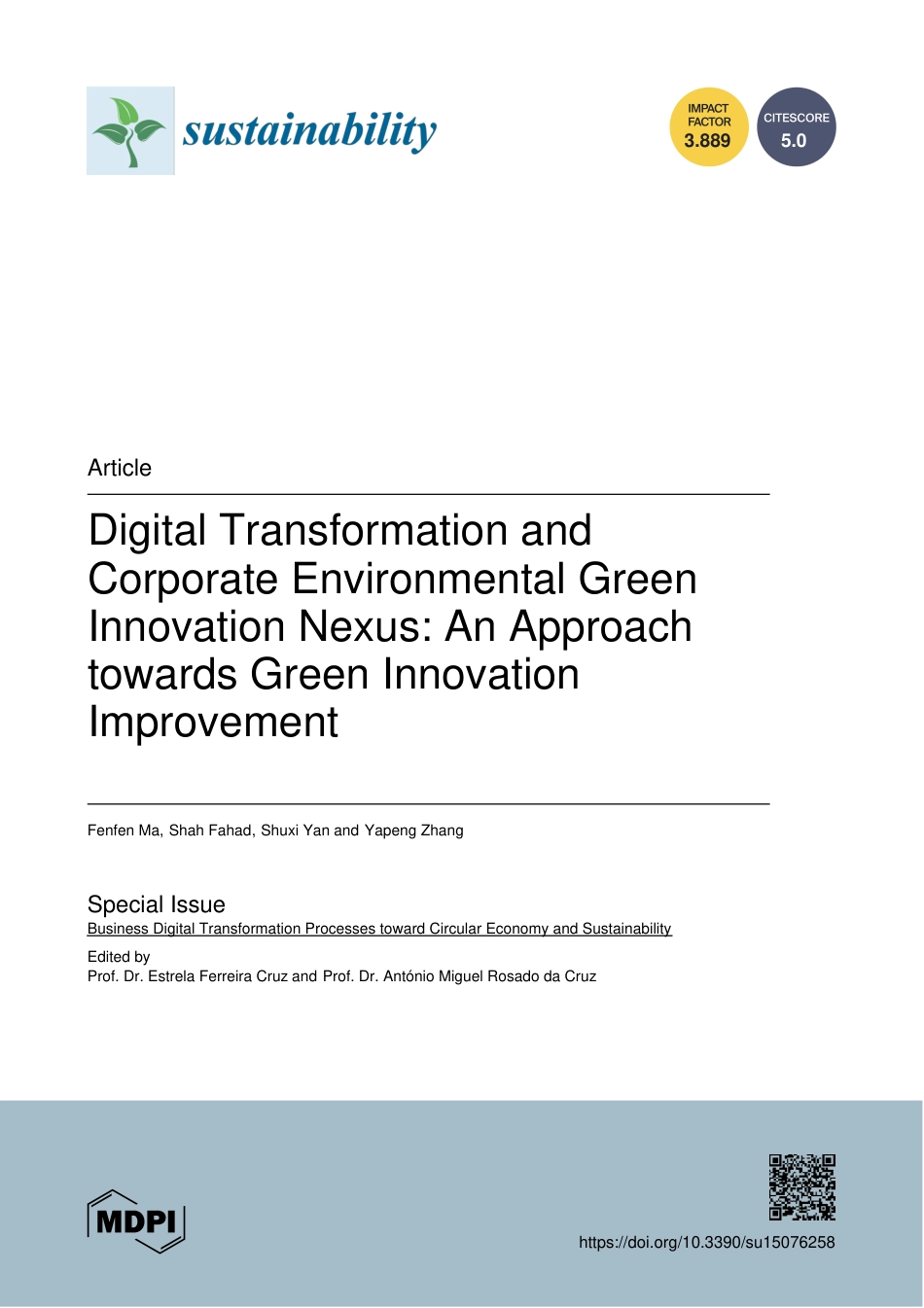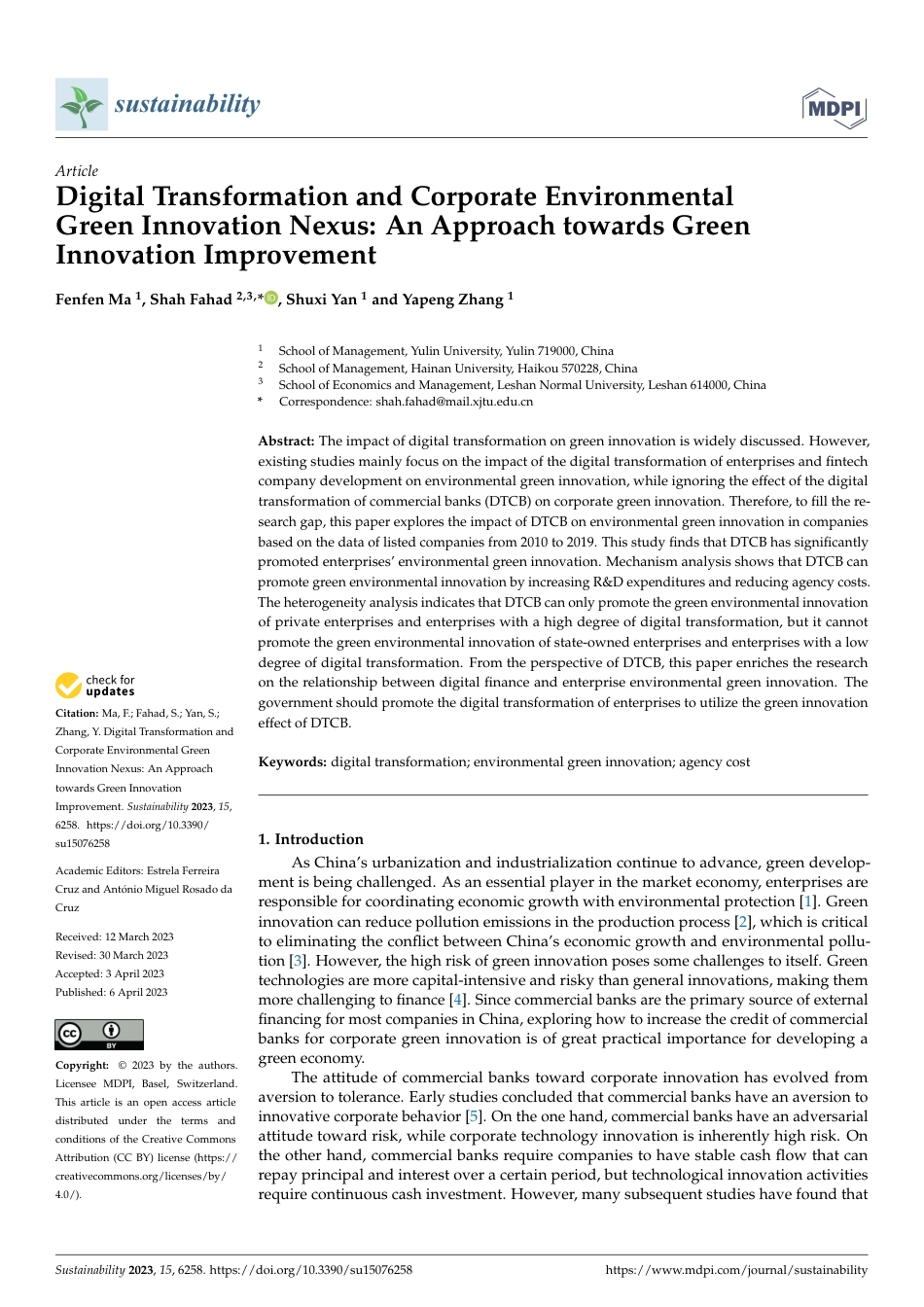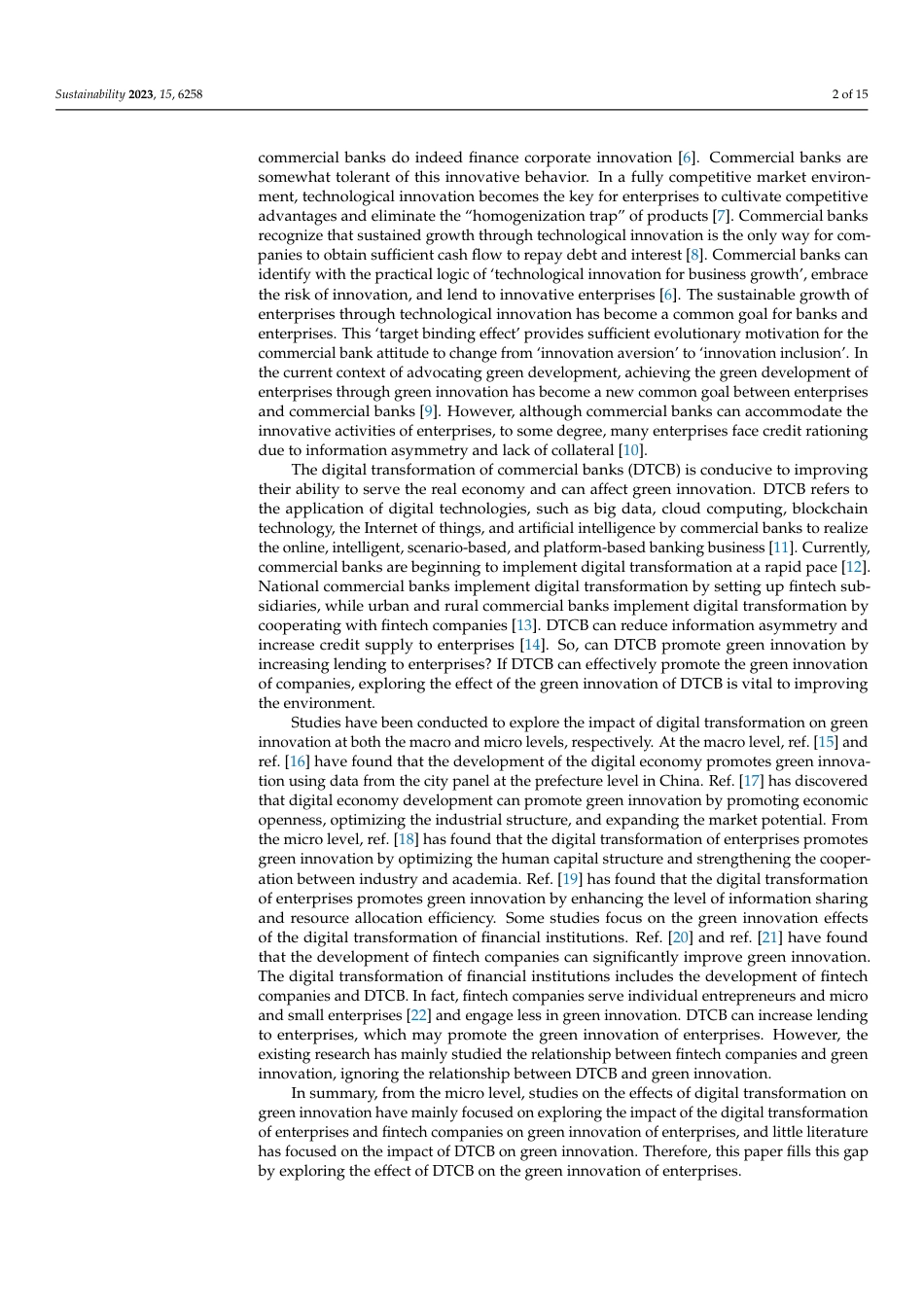5.03.889Digital Transformation andCorporate Environmental GreenInnovation Nexus: An Approachtowards Green InnovationImprovementFenfen Ma, Shah Fahad, Shuxi Yan and Yapeng ZhangSpecial IssueBusiness Digital Transformation Processes toward Circular Economy and SustainabilityEdited byProf. Dr. Estrela Ferreira Cruz and Prof. Dr. António Miguel Rosado da CruzArticlehttps://doi.org/10.3390/su15076258Citation: Ma, F.; Fahad, S.; Yan, S.;Zhang, Y. Digital Transformation andCorporate Environmental GreenInnovation Nexus: An Approachtowards Green InnovationImprovement. Sustainability 2023, 15,6258. https://doi.org/10.3390/su15076258Academic Editors: Estrela FerreiraCruz and António Miguel Rosado daCruzReceived: 12 March 2023Revised: 30 March 2023Accepted: 3 April 2023Published: 6 April 2023Copyright:© 2023 by the authors.Licensee MDPI, Basel, Switzerland.This article is an open access articledistributedunderthetermsandconditions of the Creative CommonsAttribution (CC BY) license (https://creativecommons.org/licenses/by/4.0/).sustainabilityArticleDigital Transformation and Corporate EnvironmentalGreen Innovation Nexus: An Approach towards GreenInnovation ImprovementFenfen Ma 1, Shah Fahad 2,3,*, Shuxi Yan 1 and Yapeng Zhang 11School of Management, Yulin University, Yulin 719000, China2School of Management, Hainan University, Haikou 570228, China3School of Economics and Management, Leshan Normal University, Leshan 614000, China*Correspondence: shah.fahad@mail.xjtu.edu.cnAbstract: The impact of digital transformation on green innovation is widely discussed. However,existing studies mainly focus on the impact of the digital transformation of enterprises and fintechcompany development on environmental green innovation, while ignoring the effect of the digitaltransformation of commercial b...



